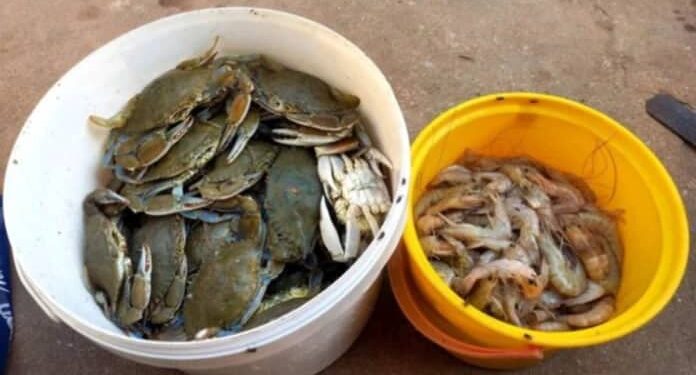The periodic opening and closing of the Azizadzi floodgates have resulted in a remarkable surge in crab and shrimp harvests in the lagoons of the Keta and Anloga districts.
Local fishermen and residents have reported a substantial increase in the abundance of these aquatic species, leading to a significant economic boost for the communities.
The Azizadzi floodgates, originally designed to regulate water levels in the lagoons and prevent flooding in the surrounding areas, have inadvertently created optimal conditions for the proliferation of crabs and shrimps.
The fluctuating water levels, combined with the regular operation of the floodgates, have facilitated the easy movement of these aquatic species in and out of the lagoons.
Fishermen in the region have noticed a notable rise in their daily catches, attributing this phenomenon to the changing water dynamics influenced by the Azizadzi floodgates.
The unexpected bounty has brought relief to the local fishing communities, which have been facing various challenges in recent times.
Emmanuel Gemegah, the Municipal Chief Executive (MCE) for Keta, highlighted that the increased availability of crabs and shrimps has not only boosted the local economy but has also opened up opportunities for expansion within the seafood industry.
While local markets are experiencing a surge in the supply of these prized catches, concerns have been raised about the sustainability of this unexpected windfall.
Environmentalists and fisheries experts are closely monitoring the situation, urging local authorities to conduct thorough assessments to prevent overfishing and mitigate any negative impact on the delicate ecological balance of the lagoons.
The Keta and Anloga districts have emerged as focal points for researchers studying the interaction between water management systems and aquatic ecosystems, highlighting the unintended consequences of infrastructure projects on natural habitats.
As discussions continue regarding the long-term management of the Azizadzi floodgates, stakeholders are grappling with the challenge of balancing flood control measures with the preservation of the region’s diverse aquatic biodiversity.


